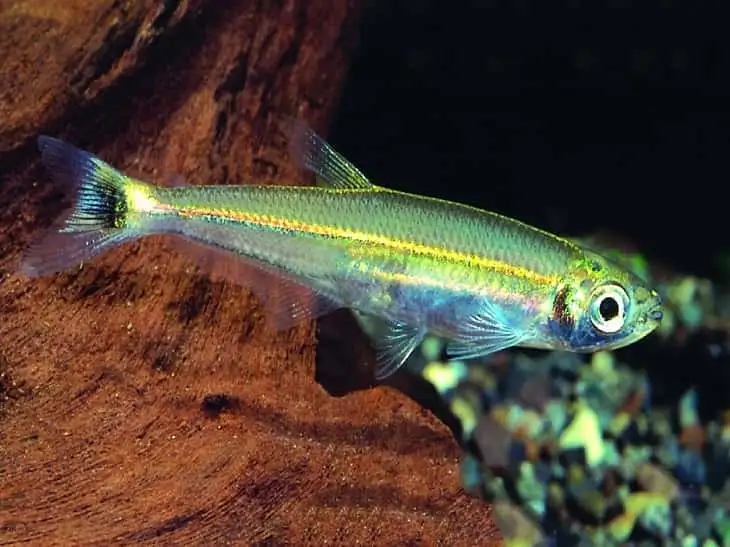Iguanodectes spilurus

The Iguanodectes spilurus, also called the iguana tetra, is widespread in the Amazon, Orinoco, Essequibo and Tocantins rivers in Brazil, Peru, Bolivia, Colombia, Venezuela, Guyana and Ecuador. The largest concentrations of fish are not found in the streams, but in small backwaters and channels that run through the forests. As a rule, the water in these areas is clear, the substrate sandy, and the coastal area densely overgrown with aquatic vegetation, among which these fish hide. The fish are easy to keep and are recommended for novice aquarists.
Iguanodectes spilurus has a slender elongated body, silver in colour with a longitudinal greenish stripe. The mouth has a protruding lower jaw, which allows the fish to easily scrape algae from various objects. Sexual differences are not pronounced. The maximum size reaches 10 cm.
The Iguanodectes spilurus is a frog fish that won't cause trouble for anyone in the aquarium. Keep them in a flock of 8-10 in an aquarium of 250 liters. In this case, males will show interesting behavior in the competition with each other for the attention of females. It is desirable to buy more females than males in order to avoid excessive confrontation between the males.
Water parameters: temperature 20-28° C, hardness dH 5-12°, acidity pH 5,0-7,5. Quality filtration, aeration and a weekly change of 1/3 of the aquarium water with fresh water is required.
Coarse-grained river sand is used as substrate. Snags and tree branches are placed on the bottom. The perimeter of the aquarium planted a variety of aquarium plants. Green-striped tetra is very sensitive to water quality and should never be placed in an immature aquarium, which has not yet established biological equilibrium.
In nature, the Iguanodectes spilurus feeds on small invertebrates, crustaceans and thread algae. Under aquarium conditions, the fish are fed with a variety of dry food as well as frozen and live food such as chironomid, daphnia and artemia. It should be borne in mind that the fish are very fond of eating Ceratophyllum submersum and if it is in the aquarium, very soon it will be left only stems. No less popular in the menu of fish and Lemna trisulca. Feed the fish once or twice a day.
Reproduction
Successful breeding Iguanodectes spilurus in an aquarium environment we know nothing. Fish that occasionally appear in the trade, supplied from their natural habitat.
In nature, during spawning, producers gently attach sticky eggs to the underside of plant leaves, and they stick them as a bunch or individually. The fry grow quickly and reach a length of about 4 cm when they are two months old.




